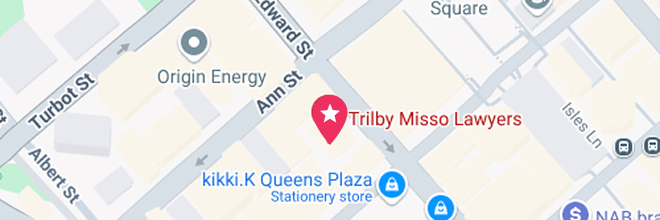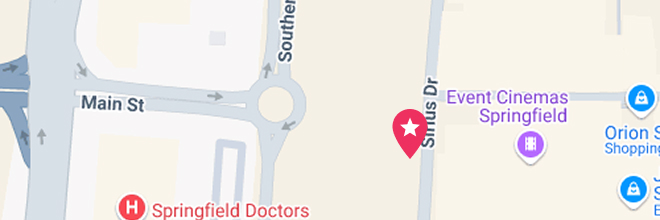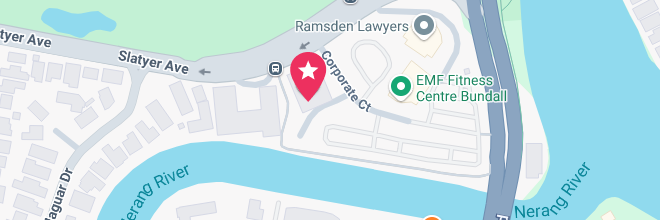Our Brisbane CBD Office
- Suite 400, Level 4/288 Edward St, Brisbane City QLD 4000
- (07) 3910 5470




Electric bikes, or e-bikes, are quickly becoming a popular way to get around in Australia. Whether it’s for commuting, food delivery, or just cruising along the esplanade, more and more people are choosing e-bikes as a greener and more affordable transport option. But with that rise in popularity comes one important question: how safe are they really?
E-bikes can reach higher speeds than traditional bikes, weigh more, and operate differently—especially when they include throttle assist. This can increase the chance of accidents or make injuries more serious when crashes occur. Riders might assume they’re just like regular bikes, but they’re not quite the same when it comes to road use, risk, and injury potential.
In this blog, we’ll break down how safe electric bikes actually are, what kinds of accidents are most common, and where the real risks lie. We’ll answer common questions—like whether e-bikes cause more accidents, what safety gear is essential, and if batteries can catch fire (yes, that’s a thing).
We’ll also cover legal rights for riders who get hurt, including how to make a compensation claim and when a no win no fee lawyer might be able to help. If you’re riding an e-bike or thinking about getting one, this guide will help you better understand the safety side of things and what to do if things go wrong.
Electric bikes are generally considered safe—but they do come with a few extra risks when compared to standard pushbikes. The main difference lies in speed and weight. E-bikes can travel faster and are heavier than regular bikes, which can lead to more serious injuries in the event of a crash.
Speed: Most e-bikes in Australia are limited to 25 km/h with pedal assist. That’s still faster than many cyclists ride naturally, which can increase stopping distances and the severity of accidents.
Weight: E-bikes often weigh 20–30 kg or more, making them harder to manoeuvre quickly in an emergency.
Acceleration: Riders may misjudge how quickly the bike can take off, especially from a stop—this is a common issue at intersections or merging lanes.
While regular bikes also come with risks, riders tend to travel at lower speeds, giving them more reaction time and reducing impact forces during falls or collisions. But with e-bikes, especially in busy traffic or shared zones, things can go wrong more quickly.
That said, e-bikes are still far safer than cars and scooters in terms of injury and fatality rates. The key to safety is knowing how to ride confidently, understanding your surroundings, and wearing the right gear.
If you’re ever involved in an incident—especially one caused by a vehicle—you may also have the right to pursue a personal injury claim just like a regular cyclist would.
Electric bikes themselves don’t necessarily cause more accidents—but studies have shown that e-bike riders are involved in a higher rate of accidents and injuries compared to traditional cyclists. This is largely due to speed, road interactions, and rider experience rather than a fault with the e-bike itself.
Increased speed: Riders travel faster on e-bikes, which shortens reaction time and increases the impact in a crash.
Heavier frames: Heavier bikes are harder to control or stop quickly, especially downhill or in wet weather.
More urban usage: E-bikes are used more frequently in cities and high-traffic areas where risk of collision is greater.
Newer riders: Many e-bike users are either inexperienced cyclists or returning to riding after many years, which can increase the chance of rider error.
Some research from overseas also suggests that e-bike riders are more likely to suffer serious injuries than regular cyclists, particularly involving the upper body and head. However, these stats don’t mean e-bikes are dangerous—they just require a different approach to safety and awareness.
In Queensland, if you’re injured in an e-bike crash due to another person’s actions—like a careless driver or poorly maintained road—you may be able to make a compensation claim. A no win no fee lawyer can help guide you through this process if you’re unsure.
While e-bikes offer convenience and a faster way to get around, they also come with unique safety risks that riders need to be aware of. These risks aren’t always obvious—especially for new riders who assume an e-bike handles just like a traditional bicycle.
Speed-related crashes
Because e-bikes can travel faster, riders have less time to react to hazards like turning vehicles, sudden obstacles, or changing traffic conditions.
Reduced control
E-bikes are heavier and harder to stop quickly. This can be a problem on hills, wet roads, or in emergency braking situations.
Visibility to drivers
Motorists often don’t expect bikes to move so quickly. This misjudgement can lead to drivers pulling out in front of e-bikes or failing to give way.
Lack of helmet use
Despite helmet laws in Queensland, not all riders wear helmets—especially when using shared or rented e-bikes.
Inexperience
Some riders, particularly delivery workers or first-time users, may not be confident in handling an e-bike, especially in traffic-heavy or unfamiliar areas.
Overloaded or modified bikes
Some riders carry heavy bags, children, or modify their bikes to go faster—this impacts balance and braking distance.
Understanding these risks is key to staying safe. If an accident does occur—especially due to someone else’s negligence—you may be eligible for a personal injury claim under Queensland’s CTP scheme.
Yes, while rare, e-bike battery fires can and do happen, including here in Australia. Most electric bikes run on lithium-ion batteries, which are efficient and powerful—but if damaged, poorly made, or charged incorrectly, they can overheat or even catch fire.
Overcharging or using the wrong charger
Using non-compatible chargers or leaving the battery plugged in too long increases the risk of overheating.
Physical damage
A battery damaged in a crash or dropped on a hard surface may short-circuit internally.
Poor quality or non-certified batteries
Cheap aftermarket batteries or dodgy imports without Australian safety certification can be a fire hazard.
Charging in unsafe locations
Charging a battery near flammable materials (like inside a bedroom or on carpet) can worsen the outcome if a fire starts.
While battery fires are not common, Fire and Rescue NSW has responded to multiple incidents involving e-bikes and e-scooters. The risk goes up in shared housing, apartment blocks, or when people modify their e-bikes to exceed legal limits.
Use the charger that came with your e-bike
Don’t charge overnight or unattended
Keep batteries away from heat, direct sunlight, and flammable materials
Avoid water exposure and damage
Store batteries in a fire-resistant container or area
Battery safety is just one part of staying safe on an e-bike. If your battery was faulty or exploded after a crash, you may also have rights under product liability or personal injury claim laws.
Riding an e-bike safely isn’t just about following the road rules—it’s also about wearing the right gear to protect yourself. Because e-bikes travel faster and are often used in heavier traffic, having the proper safety equipment is essential to reducing your risk of serious injury in a crash.
Helmet (mandatory in Queensland)
Wearing a helmet is a legal requirement in QLD and arguably the most important piece of safety equipment. It can significantly reduce the risk of head injury.
High-visibility clothing
Bright or reflective gear helps ensure drivers and pedestrians can see you—especially at dawn, dusk, or night.
Front and rear lights
Lights are legally required at night and during poor visibility conditions. Even during the day, flashing lights help you stand out.
Gloves
Help protect your hands during a fall and improve your grip on the handlebars.
Elbow and knee pads (optional)
Particularly useful for less experienced riders or those commuting in busy areas.
Protective eyewear
Shields your eyes from wind, bugs, or debris—especially at higher speeds.
Closed-toe shoes with good grip
Sandals and thongs offer little protection and can affect your ability to brake safely.
Wearing the right gear won’t prevent every accident, but it can make a huge difference to the outcome. And if you’re injured despite taking precautions, personal injury lawyers Brisbane may be able to help you pursue compensation—particularly if someone else was at fault.
E-bike accidents can happen almost anywhere, but certain locations and road environments tend to see higher rates of crashes and injuries—especially in busy cities like Brisbane. The combination of increased speed, heavy traffic, and limited bike infrastructure creates risky conditions for riders.
Intersections and roundabouts
Many e-bike accidents happen at intersections, where cars turn across the path of a rider or fail to give way. Drivers often misjudge how fast an e-bike is moving.
Shared paths and footpaths
E-bikes are often involved in low-speed accidents on shared paths, particularly when mixing with pedestrians, dogs, prams, or slower cyclists.
Bike lanes merging into traffic
When protected bike lanes end suddenly, riders are forced to merge into live traffic, increasing the chance of being sideswiped or rear-ended.
Driveways and carparks
Drivers reversing out of driveways or cutting across footpaths often don’t expect a fast-moving e-bike to appear—leading to collisions.
Inner-city roads and delivery zones
E-bike food delivery riders are frequently injured in CBD areas due to congestion, time pressures, and interactions with parked or moving vehicles.
Steep or poorly maintained roads
In hilly areas or streets with potholes, loose gravel, or slippery surfaces, riders can easily lose control—especially going downhill.
Knowing where crashes most commonly happen can help you stay alert in higher-risk areas. But if you’ve been involved in a crash caused by someone else’s actions, you may have grounds for a compensation claim under Queensland law.
Yes, if you’re injured in an e-bike accident and someone else was at fault—such as a driver, a local council (for poor road conditions), or even a manufacturer—you may be eligible to make a personal injury claim in Queensland. E-bike riders have similar legal rights to cyclists when it comes to claiming compensation.
A car collided with you while you were riding your e-bike
A vehicle turned across your path or opened a door into your lane
You were forced off the road due to a driver’s negligence
You crashed because of a poorly maintained road or bike path
Your e-bike malfunctioned due to a manufacturing fault
Medical and hospital expenses
Time off work and loss of income
Rehabilitation and ongoing care needs
Pain and suffering
Travel costs related to treatment
Importantly, if a registered vehicle was involved, your claim would usually go through the CTP insurer of that vehicle. If the driver wasn’t identified—such as in a hit-and-run—you may still be able to claim through the Nominal Defendant.
Getting legal advice early is a smart move. Many no win no fee lawyers offer free initial consultations, so you can find out your options without financial pressure. If your crash involved a vehicle and wasn’t your fault, you may be entitled to support while you recover.
Queensland Government – E-bike rules and regulations
Details the legal requirements for electric bikes in Queensland, including speed limits, where they can be ridden, and how they’re classified.
https://www.qld.gov.au/transport/bike-riding/riding/electric-bikes
Queensland Police – Reporting a road incident
Learn how and when to report a road incident or crash involving an e-bike or vehicle.
https://www.police.qld.gov.au/reporting/traffic-crash
Electric bikes are a fantastic way to get around—quick, eco-friendly, and ideal for short commutes or delivery work. But with extra speed and weight comes added risk. While most e-bike rides are uneventful, crashes do happen, and injuries can be serious. Understanding how to ride safely, wearing the right gear, and knowing your rights if something goes wrong are key to protecting yourself.
In Queensland, if you’re injured on an e-bike due to a driver’s actions, unsafe infrastructure, or faulty equipment, you may be entitled to make a compensation claim. Don’t assume you’re on your own—no win no fee lawyers can help guide you through your options and ensure your rights are upheld.
Kathryn is Trilby Misso’s Chief Executive Officer.
Meet KathrynUse this simple online tool and find out if you have a claim in less than thirty seconds. You can choose to remain anonymous.
Your next step is a small one. All you need to do is give us a call on 07 3910 5470 or complete this form here to arrange a quick chat.
During this initial conversation, we will:

We understand that taking legal action can be stressful, and we’ll do all we can to ease your concerns.
The chat can take place at our place, your place, or by phone. There is no cost, no pressure, and no obligation.
Call 07 3910 5470 or fill out this form, and we’ll get back to you within 2 hours (during business hours). We look forward to meeting you.
enquire now